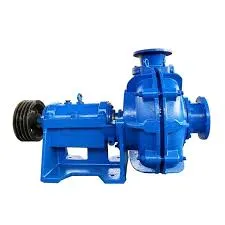English
- Afrikaans
- Albanian
- Amharic
- Arabic
- Armenian
- Azerbaijani
- Basque
- Belarusian
- Bengali
- Bosnian
- Bulgarian
- Catalan
- Cebuano
- Corsican
- Croatian
- Czech
- Danish
- Dutch
- English
- Esperanto
- Estonian
- Finnish
- French
- Frisian
- Galician
- Georgian
- German
- Greek
- Gujarati
- Haitian Creole
- hausa
- hawaiian
- Hebrew
- Hindi
- Miao
- Hungarian
- Icelandic
- igbo
- Indonesian
- irish
- Italian
- Japanese
- Javanese
- Kannada
- kazakh
- Khmer
- Rwandese
- Korean
- Kurdish
- Kyrgyz
- Lao
- Latin
- Latvian
- Lithuanian
- Luxembourgish
- Macedonian
- Malgashi
- Malay
- Malayalam
- Maltese
- Maori
- Marathi
- Mongolian
- Myanmar
- Nepali
- Norwegian
- Norwegian
- Occitan
- Pashto
- Persian
- Polish
- Portuguese
- Punjabi
- Romanian
- Russian
- Samoan
- Scottish Gaelic
- Serbian
- Sesotho
- Shona
- Sindhi
- Sinhala
- Slovak
- Slovenian
- Somali
- Spanish
- Sundanese
- Swahili
- Swedish
- Tagalog
- Tajik
- Tamil
- Tatar
- Telugu
- Thai
- Turkish
- Turkmen
- Ukrainian
- Urdu
- Uighur
- Uzbek
- Vietnamese
- Welsh
- Bantu
- Yiddish
- Yoruba
- Zulu
Telephone: +86 13120555503
Email: frank@cypump.com
Nov . 30, 2024 11:07 Back to list
Understanding the Components of a Septic Pump Tank System and Its Functionality
Understanding the Septic Pump Tank System
Septic systems are an integral part of wastewater management for many homes, especially in rural areas where municipal sewage systems do not exist. Among these systems, the septic pump tank serves a crucial role in ensuring that wastewater is properly processed and disposed of. In this article, we will delve into the components and functions of septic pump tank systems, their advantages, as well as considerations for maintenance and troubleshooting.
What is a Septic Pump Tank System?
A septic pump tank system is designed to manage wastewater flow from homes without direct access to gravity-fed sewer lines. It consists of a septic tank, a pump tank, and a set of drainfields. Wastewater from the home flows into the septic tank, where solids settle at the bottom and are partially broken down by bacteria. The liquid effluent then moves to the pump tank, which is equipped with a pump that transports the liquid to the drainfield for final treatment.
Components of a Septic Pump Tank System
1. Septic Tank This is where the initial treatment of sewage occurs. It typically holds the wastewater for several days, allowing solids to settle and scum to rise to the top. The septic tank is usually made of concrete, fiberglass, or plastic and must be watertight to prevent contamination of the surrounding soil.
2. Pump Tank The pump tank contains a submersible pump that is activated when the wastewater reaches a certain level. It is equipped with a float switch, which triggers the pump to move the effluent to the drainfield. The pump tank ensures that wastewater can be moved uphill or over long distances, making it vital for homes situated in areas without sloping landscapes.
3. Drainfield Also known as a leach field, the drainfield is where the treated wastewater is dispersed into the soil for further filtration and treatment. The design of the drainfield is critical for preventing groundwater contamination.
Advantages of Septic Pump Tank Systems
2. Independence from Municipal Systems Homeowners with septic systems enjoy autonomy from municipal sewage systems, reducing dependency on city infrastructure and fees.
septic pump tank system

3. Environmental Considerations When properly maintained, septic systems can be environmentally friendly, as they treat wastewater on-site and minimize the potential for pollution.
Maintenance Considerations
Regular maintenance is crucial for the longevity and efficiency of a septic pump tank system. Here are key maintenance tips
1. Pumping Out the Septic Tank It is recommended to have the septic tank pumped every 3 to 5 years, depending on usage and the size of the tank. This prevents sludge buildup, which can lead to system failure.
2. Inspecting the Pump The pump should be inspected regularly to ensure it is working correctly. If you hear unusual noises or if the pump runs continuously, it may indicate an issue that requires professional attention.
3. Monitoring Drainfield Functionality Watch for signs of drainfield failure, such as pooling water or unpleasant odors. Regularly checking for these indicators can prevent more significant problems down the line.
4. Avoiding Harmful Substances It’s essential to avoid flushing harmful substances down the drain, including chemicals, oils, and non-biodegradable materials. These can disrupt the bacterial processes necessary for effective wastewater treatment.
Troubleshooting Common Issues
Common issues with septic pump tank systems include pump failure, backups, and overflows. If you experience slow drainage or sewage odors, these may signal a blockage or malfunction. In such cases, it’s best to consult a licensed septic service provider who can diagnose and remedy the issue efficiently.
Conclusion
Understanding how a septic pump tank system works and the importance of maintenance can help homeowners prevent costly repairs while ensuring effective wastewater management. By taking the time to learn about these systems, homeowners can enjoy the benefits of a reliable and efficient septic solution that protects both their property and the environment. Regular maintenance and monitoring can foster a sustainable approach to handling wastewater in areas not serviced by municipal systems.
-
Horizontal Split Case Pump with GPT-4 Turbo | High Efficiency
NewsAug.01,2025
-
ISG Series Pipeline Pump - Chi Yuan Pumps | High Efficiency, Durable Design
NewsAug.01,2025
-
Advanced Flue Gas Desulfurization Pump with GPT-4 Turbo | Durable & Efficient
NewsJul.31,2025
-
ISG Series Vertical Pipeline Pump - Chi Yuan Pumps | Advanced Hydraulic Design&Durable Construction
NewsJul.31,2025
-
ISG Series Vertical Pipeline Pump - Chi Yuan Pumps | Energy Efficient & Low Noise
NewsJul.31,2025
-
pipeline pump - Chi Yuan Pumps Co., LTD.|High Efficiency&Low Noise
NewsJul.31,2025










